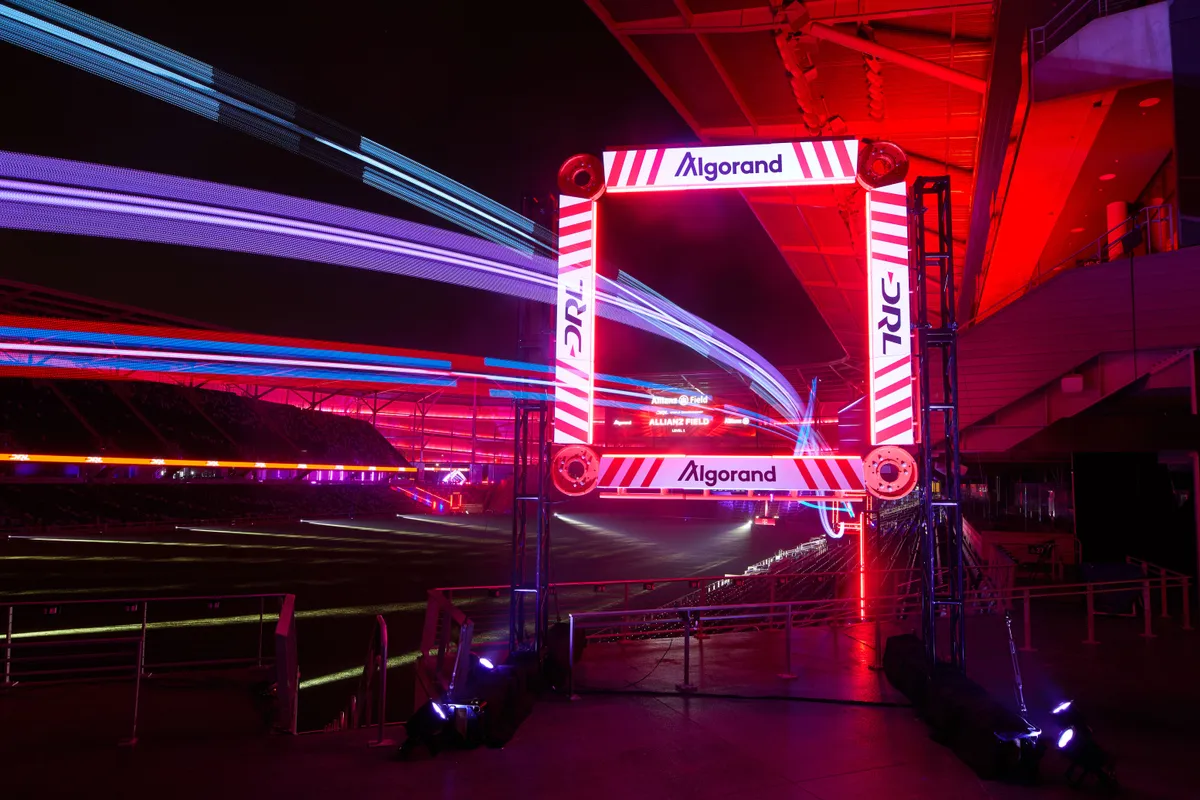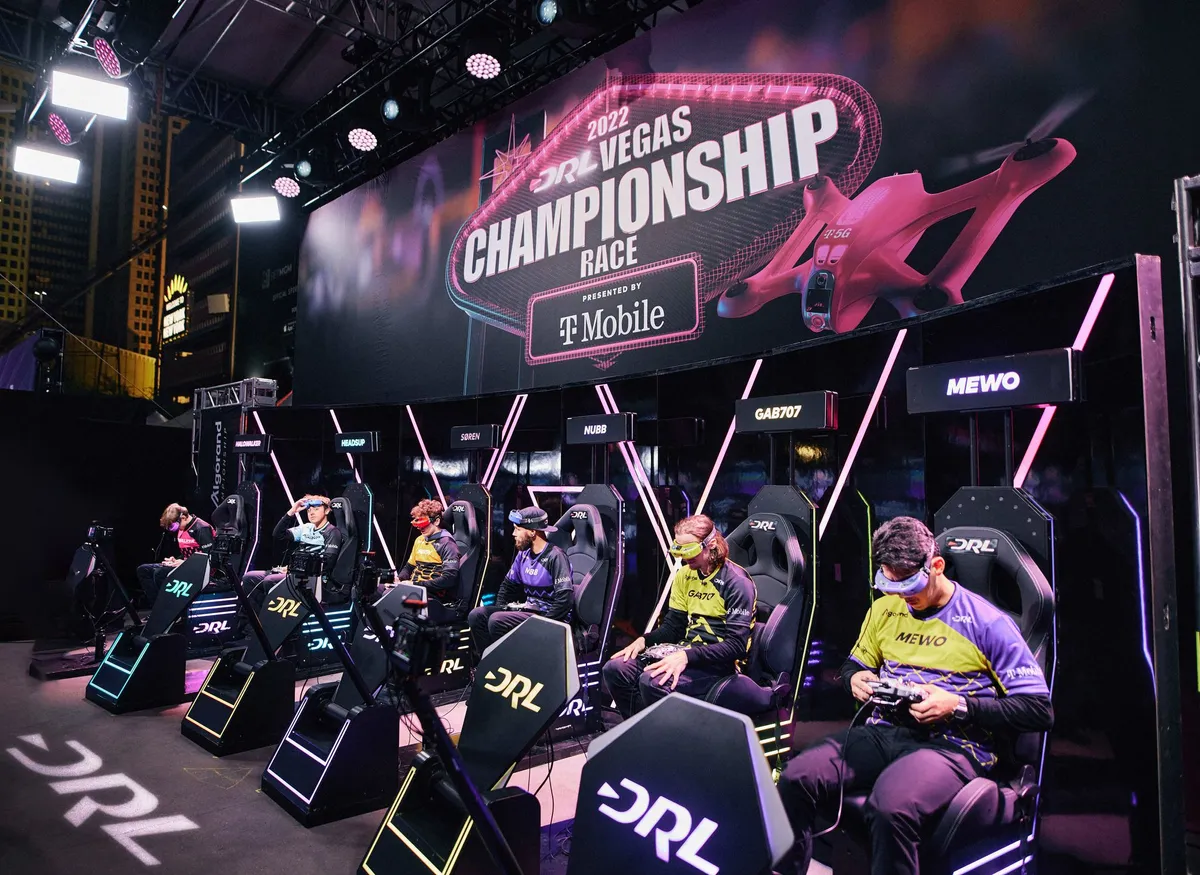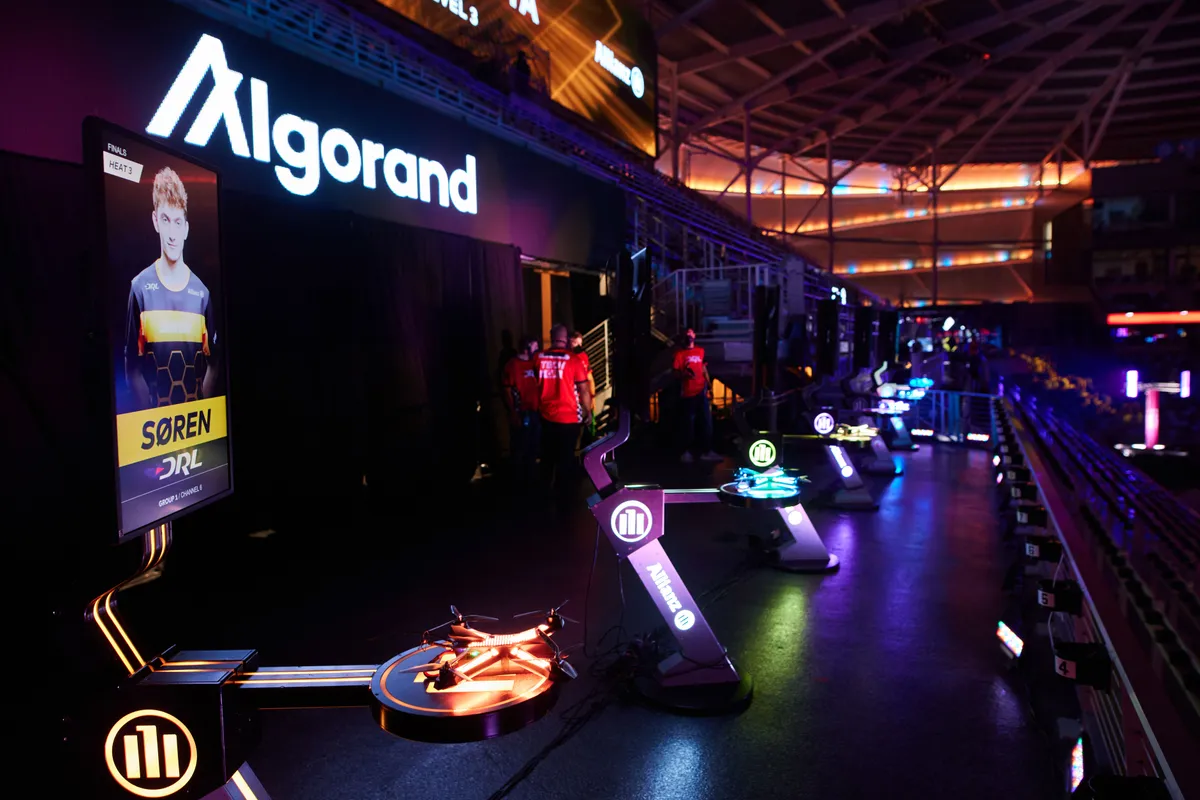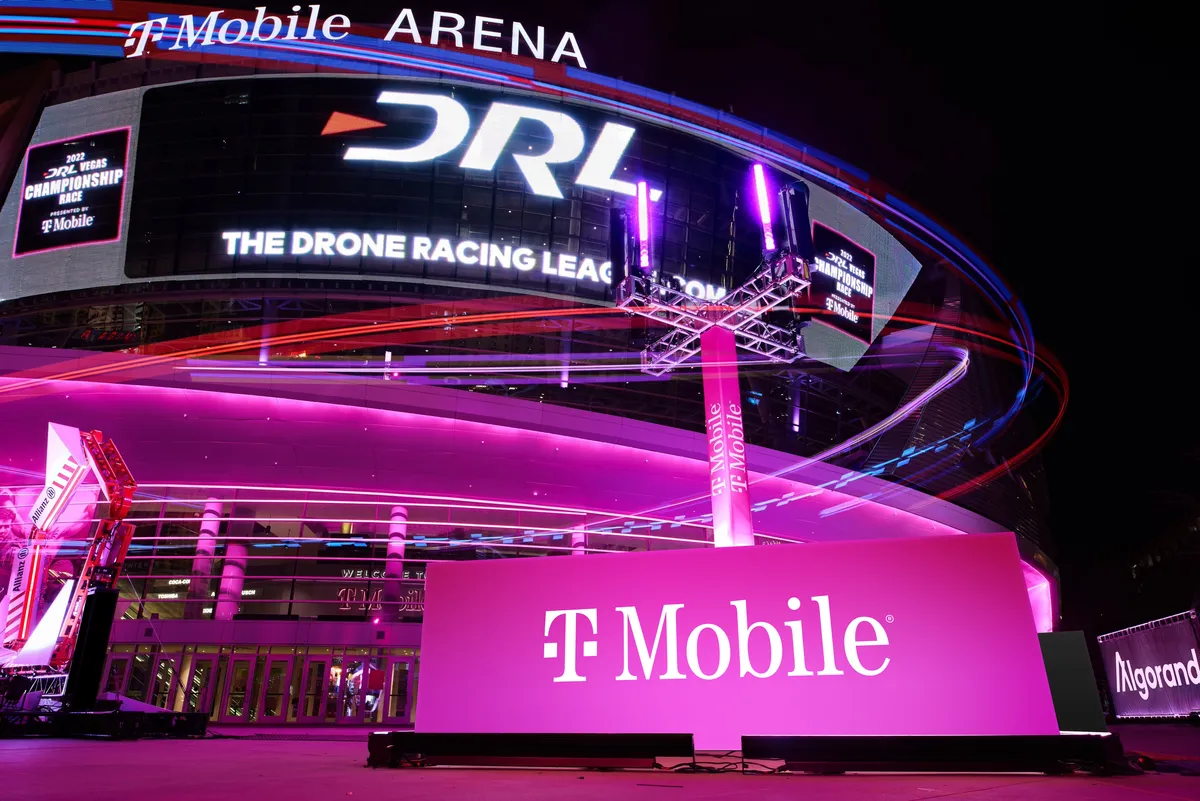Evan Turner is a racer who holds two championship wins, 25 podium positions, and the position of the youngest champion winner in history. But unlike sports like F1, or MotoGP, Evan’s race of choice takes place in the sky.
Turner is one of many who has gotten into the sport of drone racing. While it remains a relatively new sport forming around 2011, it has a large, dedicated fan base. In its most recent season, the sport attracted audiences across six continents, broadcasting to over 250 million households.
But how does this form of racing work? What is it like to fly one of these lightning-fast drones? And how can someone break into this rapidly growing sport? We spoke to Evan Turner to find out.
What is drone racing and how does it work?
Drone racing, as the name would suggest, involves pilots racing a set of drones around a course. However, these aren’t the bulky drones you normally see. These are small, lightweight crafts that can reach speeds of over 100mph.

While you could just meet up with your friends and race drones around a park, at the professional level, these events are organised by the Drone Racing League with prizes and money on the line.
“Generally, it is like any motorsport or race, whether that's track and field or Formula 1. All the pilots show up and do a series of qualifying attempts where they are positioned based off their best time, and there are different ways that can work,” says Turner.
These qualifying attempts could be your best time across three laps, your best attempt at one single lap, or any measurement that the league decides to use. These qualifying laps are then used to create elimination-round brackets that typically include 16, 32 or 64 pilots.
“After qualifying, you are placed with four to eight pilots and you all race at the same time. The top half of that group move on through the winner’s bracket. All the races are a double elimination system so you can lose once, but you can keep racing and still work your way to the finals. Eventually, you're left with four to eight pilots who race in the final,” says Turner.
While the rules and system for qualifying are similar to other sports, the layout of the tracks is entirely different. “The tracks change a lot. What makes drone racing so incredibly unique in comparison to other motorsports is that the tracks are across different heights and levels. In drone racing, the gates are all over the place,” says Turner.
“Some gates are on the ground, some are elevated 10 to 20 feet, or you may be in a location like a stadium where gates are far at the top of the stadium or in the top stands. And then there'll be gates all the way down, maybe even through the tunnels of the stadium.”
Becoming a champion
Despite being just 19, Evan’s had a long interest in the world of drones and has quickly managed to form a successful career around it.

“I got into drone racing through just a general interest in things that fly and my competitive personality. It was my hobby, my passion, something I could do with my dad from a very young age. When I was 13 or 14, my friend started flying drones and we started flying together,” says Turner.
“2017 was my first U.S. nationals and I came 10th. In 2018, 2019 and 2021, I won the U.S. Nationals, so I'm the only three-time U.S. national champion ever. I also won the Drone Racing League, which is a TV show broadcast on the likes of NBC and ABC Sports where the 12 best drone racing pilots in the world compete. And I've won that since that the past two years in a row.”
Like all good champion athletes, Turner then diversified starting a business alongside his racing career. This business involves selling drone parts for fellow hobbyists and professionals alongside an aerospace engineer who comes from Boeing.
Taking to the sky
While most drones make use of a screen to show you what they see, the kind of drones used in racing take things a step further. Known as First Person View (FPV) drones, a racing drone requires you to strap on a headset, fully immersing yourself in its view.
“Flying one of these drones is an exhilarating experience, it's like nothing you've ever done before. Drone racing is a weird mix between reality and the experience of a video game. You use a controller, like you would with a console, you wear goggles like you would with VR. But when you move the sticks, a drone is moving in real space,” says Turner.
“You can fly around the environment with pretty much no limitations. If you see a lighthouse way out in the ocean, then go fly to it. Want to skim low to the water at 100 miles an hour, then you are welcome to it. Skill is the only thing that is limiting you here.”

Getting your pilots wings
While you would think the best way to get into FPV drone flying would be to just buy one and get out there, Evan suggests one step before.
“The best way to learn how to fly an FPV drone is to get on a simulator. These are games that allow you to practice flying a drone. Some popular ones are the Drone Racing League simulator or VelociDrone,” says Turner.
These are affordable games that you can get for your console or computer. By doing this first, you can not only get some practice in to save you from an expensive drone crash, but also help you decide if this is a hobby for you.
“With the simulator, there are pilots I've seen who have flown on the simulator for a week or two and practise really hard. And then the first time they pick up a drone, they're already a top-level pilot. Most people will be able to learn with some basic direction within a week,” says Turner.
Unlike most drones these days that can practically fly themselves, FPV types offer no safety features or assists, you are in complete control which both gives you a lot of freedom and makes your life a whole lot more difficult with a steep learning curve.
"Once you've tried a simulator and you come to buy a drone, I would say to keep the phrase "buy cheap or buy twice" in your mind. There are loads of products that aren't the best, but they are cheap. Save up a little bit more, to invest in some better products and then use that time that you're saving up to just practise a little bit more in the simulator.”
Future engineers

Like other newer competitive sports, Turner believes there are some misconceptions about what drone racing is and how people view it.
"The word drone carries a bad connotation for some. There are people who think drones are bad for whatever reason. But at the end of the day, I think that what people have to understand is that drone racing is so incredibly valuable, not just to your average hobbyist, but from an educational standpoint as well,” says Turner.
“This gets kids of all ages outside of the house, but also teaches them electrical and troubleshooting skills, and even programming. There are so many benefits drone racing offers to education that I really think it outweighs any negative connotations. Drone flying can help build the next engineers, the next entrepreneurs, because this is a legitimate career path more than ever.”
Read more:
